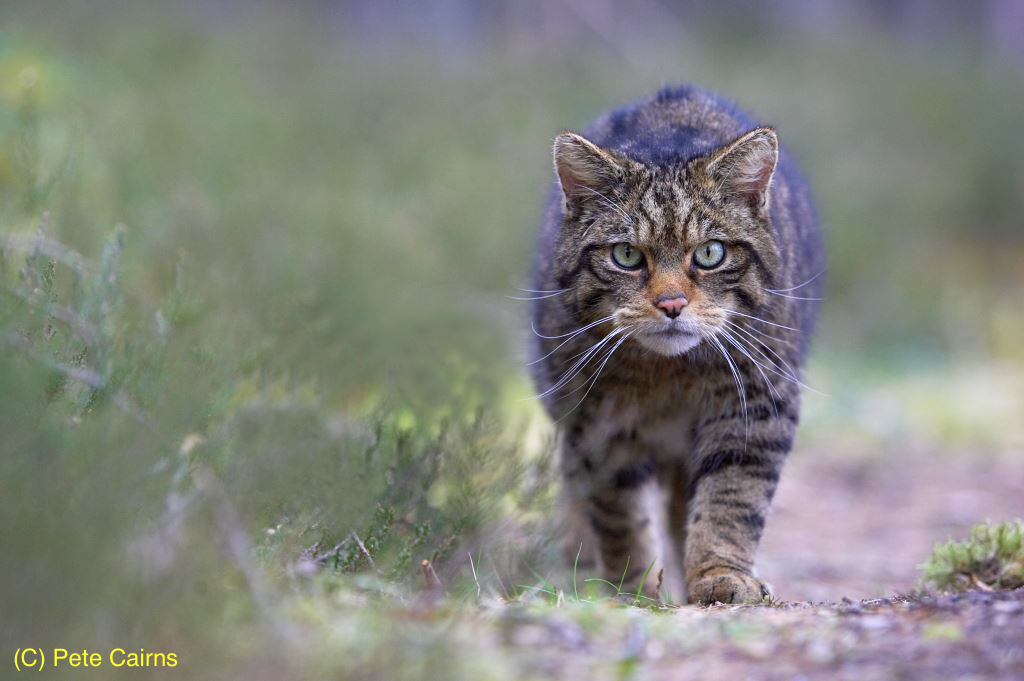Scottish Wildcats

This project includes official (led previously by Scottish Wildcat Action) and community-led surveys throughout the range of the Scottish wildcat.
The Scottish Wildcat is critically endangered due to factors including habitat loss, historic persecution and hybridisation (or cross-breeding) with feral domestic cats. While wildcats are legally protected, the on-going hybridisation makes conservation difficult.
Launched in 2015, Scottish Wildcat Action (SWA) was the first conservation partnership working to try and save the species from extinction. SWA carried out extensive monitoring of wild-living cats across several priority areas across the North of Scotland.
In 2018, SWA partners commissioned members of the IUCN SSC Cat Specialist Group to carry out an independent review of the conservation status of the wildcat in Scotland and the conservation work done to date.
The report concluded there is no longer a viable wildcat population living wild in Scotland, with hybridisation with domestic cats the major threat to their survival. This means the extinction of the species is highly likely without wildcat releases. Captive breeding for release is now required to safeguard this iconic species from extinction.
Saving Wildcats is a European partnership project dedicated to wildcat conservation and recovery which aims to prevent the extinction of wildcats in Scotland by breeding and releasing them into the wild. Saving Wildcats builds on the work of SWA.
During the SWA project, a vast number of trail camera images from six sites across Scotland were collected, including thousands of cat images, plus the hundreds of thousands of images of all the other wildlife that just happened to walk by (‘by-catch’). Our volunteers have identified most of the cat images but help is still needed to identify and classify the rest of the remaining images. Processing, collating, and analysing the data obtained from image identification and classification will help Saving Wildcats and their partners investigate the impacts that other species might have on wildcats and wildcat habitat use. Become a MammalWeb ‘spotter’ to help us.
Note that wildcat surveys typically involve baiting camera sites to attract carnivores. The attractant is often a dead gamebird, which can usually be seen in the picture. Please don't classify the dead gamebirds! We are only interested in living wildlife in the pictures.
We are also keen for anyone with a trail-camera to help us extend our survey efforts as far and wide as possible across the north of Scotland. Become a MammalWeb ‘trapper’ for us. Data can then be uploaded to this MammalWeb project page. Just make sure you link your trapping site to the relevant ‘Scottish Wildcats’ project when you upload.
For more information about Saving Wildcats, please visit our website.
This project has the following subprojects:

 English (United Kingdom)
English (United Kingdom)  Nederlands (nl-NL)
Nederlands (nl-NL)  Magyar
Magyar  Deutsch (Deutschland)
Deutsch (Deutschland)  Croatian (Hrvatski)
Croatian (Hrvatski)  Polski (PL)
Polski (PL)  Español (España)
Español (España)